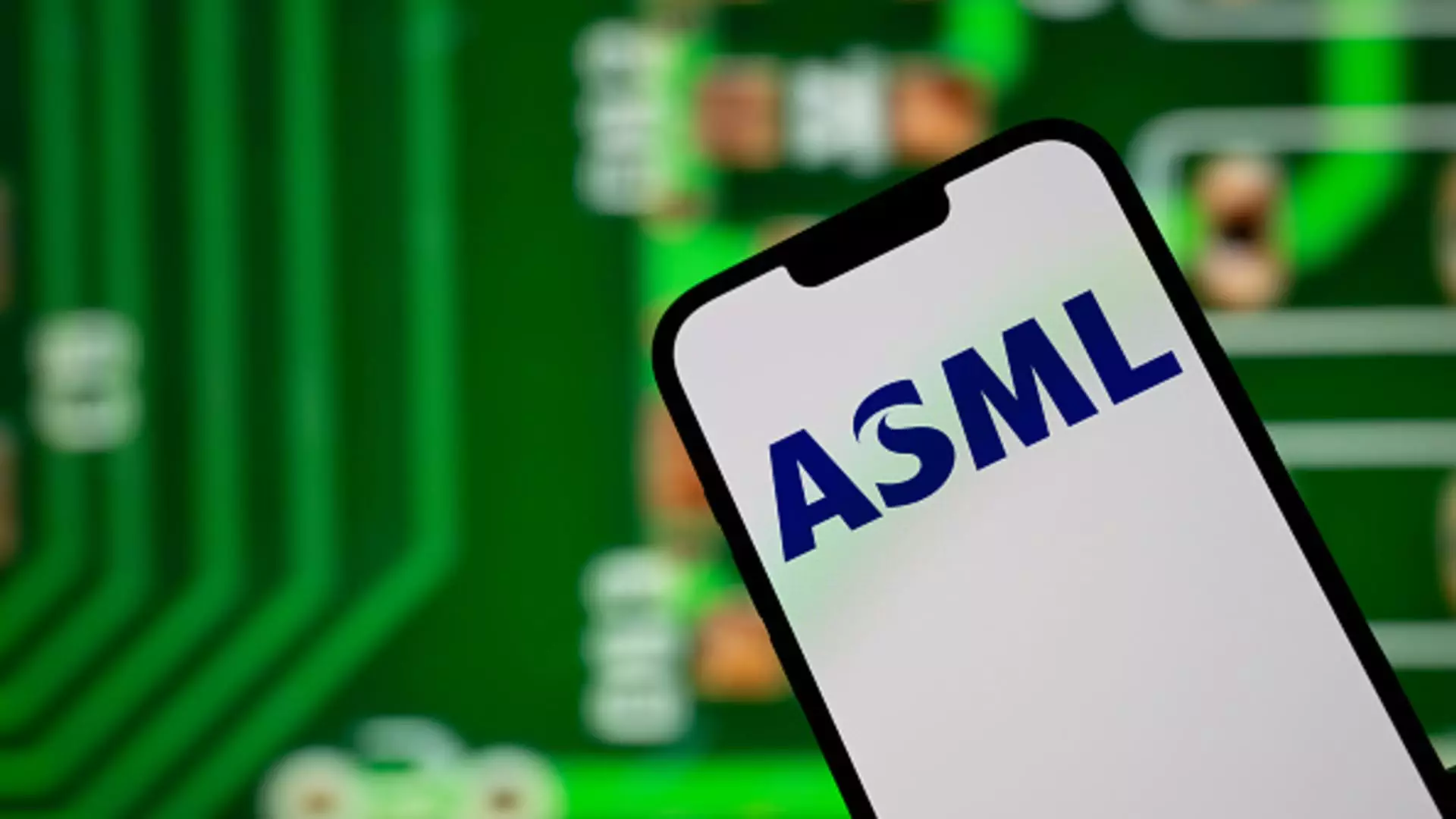The latest financial report from ASML, a pioneering force in the semiconductor industry, tells a complex story. Despite an impressive net profit of 2.36 billion euros, surpassing expectations, the glaring shortfall in net sales—7.74 billion euros compared to the anticipated 7.8 billion—paints a picture of uncertainty. This underperformance is not merely a numerical anomaly; it’s a reflection of the tumultuous landscape that has been shaped largely by aggressive trade policies from the United States. The sense of foreboding created by these U.S. trade restrictions sends tremors not just across ASML’s operations but also affects its customer base, particularly in the high-stakes realm of chip manufacturing.
ASML CEO Christophe Fouquet acknowledged a paradoxical scenario: while the demand for chipmaking machines is purportedly strong, the uncertainty surrounding customer dealings has transformed into a formidable challenge. It speaks volumes when executives express hesitance in confirming future revenue outlooks, signaling a cautious approach that mirrors the broader market’s anxiety. The stakes are magnified by tariffs, which have created a fog of unpredictability over ASML’s long-term projections. This situation is tragic not only for ASML but also for its stakeholders, who are caught in the crossfire of geopolitical machinations.
Global Supply Chain Dynamics
Let’s delve deeper into what this means for the global semiconductor supply chain, which has been a tightrope walk for companies in the sector for years. ASML is not just a supplier of machines; it is a linchpin in the intricate web of global technology production. The company has been heavily relied upon by heavyweights like TSMC and Nvidia, which makes its current standing even more alarming. Analysts predict that the impact of U.S. tariffs could be “widespread,” echoing sentiments that ASML’s predicament isn’t an isolated one. The ramifications of these trade restrictions create ripples that may destabilize entire ecosystems.
As the Commerce Department embarks on a national security investigation into semiconductor imports, one can’t help but ponder whether this probe will lead to a more entrenched, hostile environment for cross-border trade. The mere mention of “national security” has often served as a catch-all justification for restrictive tariffs. If this mindset permeates, many companies may have to resort to costly adaptations, which could further complicate the already delicate balance between global partnerships and local policies.
Artificial Intelligence: A Double-Edged Sword
An important point raised by Fouquet was the staying power of artificial intelligence (AI) as a significant driver of demand for semiconductor equipment. While it’s true that AI has positioned itself as a revolutionary force in many industries, relying on AI as a beacon of hope in uncertain times could be a double-edged sword. As companies ramp up their investments in AI capabilities, they may find themselves ensnared in escalating competition, with ASML caught in the middle.
Ironically, while AI drives the demand for cutting-edge chips, the very essence of innovation necessitates stability within supply chains. The uncertainty brought on by tariffs could stifle initiatives that would otherwise harness the transformative potential of AI. ASML is left in a precarious position: it must navigate its own future while simultaneously enabling others to innovate. This interconnectedness in the tech ecosystem underscores the potential risks associated with hasty legislative decisions that could deter investment and innovation.
Investor Sentiment and StockMarket Movement
Turning to the realm of finance, the reaction of investors offers another lens through which to view ASML’s recent troubles. A 5% drop in shares signals an immediate market response, reflecting an increasing distrust regarding the firm’s ability to meet its projected revenue targets. Such volatility is not unusual in markets dictated by rapid change and uncertainty; however, it can establish a negative feedback loop—diminished investor confidence may lead to a further decline in demand, creating an even harsher landscape for futures.
Equity analysts are compelled to balance their assessments between optimism prompted by AI’s potential and the cautious forecasts driven by emerging uncertainties. This balance is fragile, making the investment community acutely aware of the inherent risks tied to ASML’s operations. The semiconductor industry has often functioned as a barometer for broader economic conditions, and its current distress suggests that considerable adjustments may be necessary to navigate these turbulent waters.
While ASML remains a key player, its course forward is overshadowed by numerous external challenges—tariffs, competition, and escalating global tensions. As the company grapples with these issues, it is essential for stakeholders to maintain a critical lens on how these dynamics unfold, paving the way for informed decisions in an ever-evolving market.

